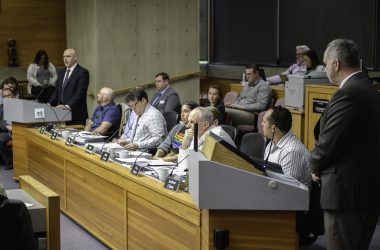Salem police had more frequent contact than previously known with the U.S. Drug Enforcement Administration while investigating one of its agents for involvement in a fatal bicycle collision, according to recently released records.
The contacts suggest the two agencies worked to manage what information was shared with the public beginning within hours of the crash.
That apparent coordination conflicts with the Salem Police Department’s repeated assertions since the March collision that it couldn’t disclose to outsiders information about the investigation.
And the records show that Salem’s police chief soon after the fatal crash was discounting that anyone would be charged in the March 28 death of cyclist Marganne Allen. That was before he decided to turn over the case to another agency because of the close professional linkages between his department and the DEA.
Marion County prosecutors said last week that they still haven’t decided whether to charge the DEA agent in the cyclist’s death.
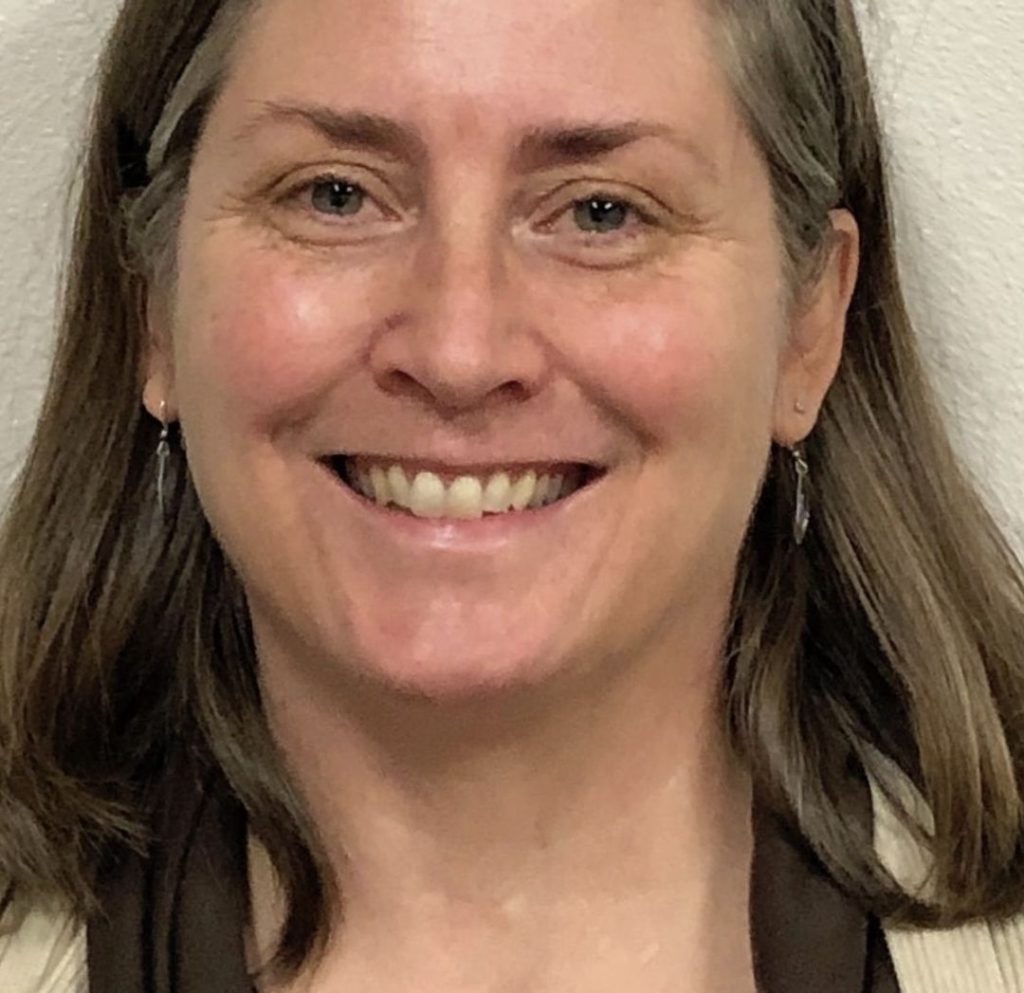
Allen, 53, was riding home from her state job when she collided at the intersection of Southeast High and Leslie Streets with a pickup truck that police said was driven by an on-duty DEA agent.
Video obtained by Salem Reporter showed that the driver of the pickup truck sped down Leslie Street, drove past a stop sign without stopping and into the intersection at High Street where the crash occurred. Police identified the driver as Samuel Landis, 37, a DEA agent.
The day of the collision, Salem citizens were told by police on social media only that the road was closed due to a “collision with a pedestrian.” The investigation shut down a high-traffic intersection in central Salem just before rush hour.
But records show that Salem police spokeswoman Angela Hendrick, a civilian employee charged with providing the public information about police matters, was almost immediately on the phone with her DEA counterpart.
Public information officers for the two agencies kept up such contacts over four days while citizens were left in the dark, first about the fatality and then about the federal agent’s role in the collision, according to a Salem Reporter investigation.
The handling raises questions about Salem police coordinating with an outside law enforcement agency to steer the flow of public information that appeared to favor the federal agent – a possible suspect – over the victim.
The full extent and purpose of the contacts between Salem police and the DEA remain unclear because neither agency will explain their actions after the collision.
Hedrick declined to answer written questions about what she discussed with the DEA or the delay in publicly releasing information about the collision, saying the case still awaits a charging decision by prosecutors.
She instead responded to recent questions with a statement that Police Chief Trevor Womack provided to Salem Reporter in July. He said then that he needed to protect the “integrity” of the case by not sharing information with the public.
Deputy District Attorney Brendan Murphy declined to confirm whether Salem police were barred from answering questions about a civilian employee’s decisions about what information to share with the public.
Hedrick has previously declined requests for an interview with Womack about the DEA matter and has routinely refused to answer questions because the investigation is still pending.
The DEA has also repeatedly declined to comment on the matter and would not address recent questions about its contacts with Salem police immediately after the collision. The federal agency on Friday, Aug. 25, instead repeated its April statement to Salem Reporter that the DEA “will continue to cooperate fully with this accident investigation.”
Salem Reporter obtained cell phone call records, email logs and police mobile computer entries to reconstruct the events.
Telephone records show Hendrick and the DEA’s public information officer spent 30 minutes on the phone over three days. Civilian public information officers have no investigatory duties.
Their contact suggests Salem police and the DEA discussed what the public would be told about the collision.
Medics, fire crews and police were called to the collision scene at 3:44 p.m., according to dispatch logs.
Hedrick called an assistant city attorney, Marc Weinstein, 22 minutes later but the purpose of the call couldn’t be established. Hedrick did not answer a question about the role city lawyers played as police decided what to tell the public about the crash.
Records established that an undercover Salem drug investigator texted photos of the collision to a DEA official 21 minutes after emergency crews arrived on the scene. Police have yet to explain why.

But City Attorney Dan Atchison in a later internal email obtained by Salem Reporter explained that the undercover officer sent the photos in his role as a contracted DEA agent.
“In my opinion, the officer that took the pictures was acting in his role as an assigned DEA agent and was providing the pictures to DEA as part of a work function,” Atchison wrote.
The message was in response to City Manager Keith Stahley, who had asked him to provide an “assessment of where the (Salem Reporter) misses the point” in a June story about Salem police giving the DEA an advance look at its first press release about the collision.
Salem police provided the first public notice of the collision with a social media post at 4:15 p.m.
“The intersection of High and Oak STS SE is closed due to a motor vehicle collision with a pedestrian. Please avoid the area at this time for the next several hours while the scene is investigated and cleared. NFI for release at this time,” the agency wrote.
Hedrck got another call from the assistant city attorney 40 minutes after that.
Records show the PIOs for the two agencies were in phone contact as early as at 5:21 p.m. A DEA public information officer not identified in the records called Hedrick, and the two spoke for 11 minutes.
They were eight minutes into that call when, at 5:29 p.m., dispatchers shared that Allen had died of her injuries at Salem Hospital. But Salem police would not announce Allen’s death until 20 hours later.
Hedrick did not address a question about under what circumstances she talks with the employer of a driver involved in a fatal collision when preparing a press release.
Three minutes after the cyclist’s death was confirmed, Hedrick called Deputy Chief Jacob Burke. They spoke for four minutes.
After Burke briefly called Hedrick and Womack again, Hedrick called the DEA spokesperson at 5:48 p.m. in a conversation that lasted nine minutes.
She spent the next 20 minutes on the phone with Burke, Womack and Salem police Lt. Mathew Riddle before getting another call at 6:20 p.m. from the DEA spokesperson. That call lasted three minutes.
Hedrick then spoke with the assistant city attorney and other police leadership, including an 11-minute call with Womack at 7:20 p.m.
Salem police updated their social media post at 7:50 p.m. to say that roads were back open. It said nothing about the driver or the victim.
Records show Hedrick called the chief again at 8:14 p.m, and they spoke for 46 minutes.
That evening, Hedrick spoke for 23 minutes over three calls with the DEA spokesperson, records show.
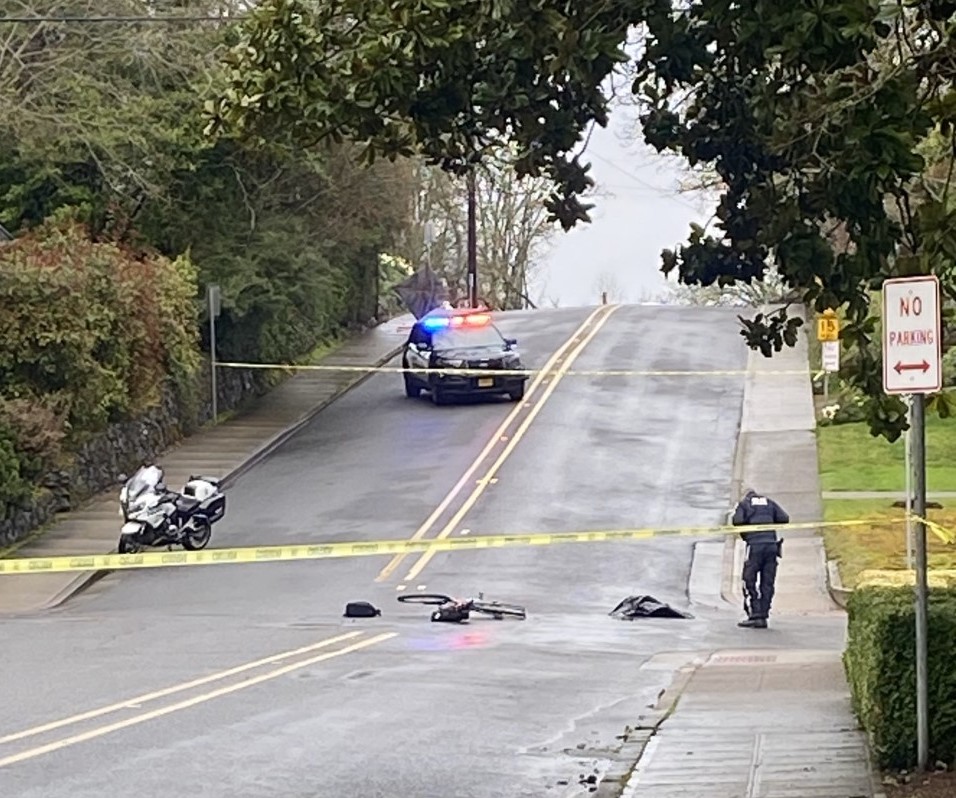
When Salem Reporter asked Hedrick about the collision the next morning, she confirmed that the victim was a cyclist and had died.
Later that morning, records showed the DEA spokesperson called Hedrick at 10:56 a.m. Hedrick then immediately emailed a draft press release about the collision with no other explanatory information to Alison Grande, public information officer for the DEA. Grande could not be reached by email for comment for this story.
Womack sent a draft press release at 1:07 p.m. that same day to Salem city councilors and Mayor Chris Hoy, notifying them of the cyclist’s death and saying the statement would soon be released publicly.
It was the first notification to the city’s elected leadership about the fatal collision. The chief made no mention of the DEA’s role.
After calling the DEA at 1:19 p.m. and again at 1:32 p.m., Hedrick sent the agency’s spokesperson another email with an updated press release. The email was sent one minute before the Salem police issued its first press release about the collision, identifying the driver as Landis but not listing his law enforcement job.
Hedrick declined to explain why it took nearly a full day to tell the community that the collision was fatal, or why information about the driver’s federal employer was withheld.
The announcement prompted one city councilor to write to Womack the next morning, after a citizen urged her in an email to look into whether the driver would be charged in the cyclist’s death.
“When I got the press release yesterday I had a feeling that there wouldn’t be charges, I’m hoping I’m wrong and would like to hear from you on this as soon as the investigation is complete,” Councilor Virginia Stapleton said in an email.
Womack responded that all charging decisions are made by the district attorney’s office.
“I will say though that serious charges, such as aggravated vehicular homicide, normally arise from accidents involving egregious driving behaviors/gross negligence, such as driving while intoxicated or very excessive speeds above the speed limit,” the chief wrote in an email. “A good number of fatal collisions occur without gross negligence being involved or proven by the facts. Fatal collision investigations and charging decisions can also take months to complete.”
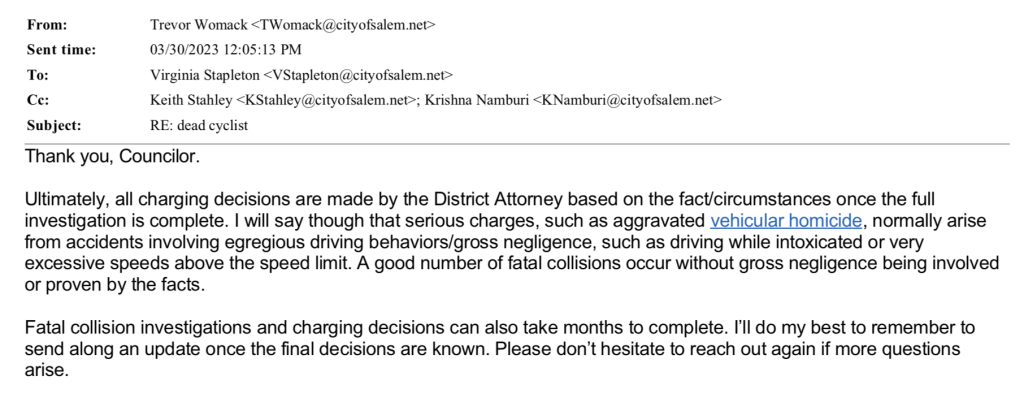
Records show the following day, on March 31, Hedrick called the DEA spokesperson at 4:21 p.m., nine minutes before Salem police issued their second press release about the collision. That new statement contained two disclosures – the driver was a DEA agent and the investigation was being transferred to the Keizer Police Department.
The unusual second press release came two days after Salem Reporter began asking authorities to verify the driver was a DEA agent.
The Salem agency said at the time it was transferring the investigation because it was partners in a task force with the DEA.
Keizer police submitted their initial report to the Marion County District Attorney’s Office on May 12, which subsequently asked for more investigation. Prosecutors again asked police on Aug. 17 to investigate further, according to Lt. Chris Nelson, Keizer police spokesman.
Nelson said Friday that Keizer investigators “conducted the follow-up” on Aug. 21 and three days later submitted a police report to a supervisor to review. He said the agency expected to submit the report to prosecutors on Monday, Aug. 28.
The collision and surrounding circumstances have since continued to attract the attention of city councilors.
More Salem citizens wrote to councilors in May with concerns after Salem Reporter reported on video showing the pickup truck driver drove through the Gaiety Hill neighborhood at excessive speed, past the stop sign and into the intersection where the collision occurred.
Councilor Vanessa Nordyke on May 16 told Womack and City Manager Keith Stahley via email that her constituents were “deeply concerned about this case.” She asked that the chief speak about the Allen matter at the next council meeting and be prepared for questions.
Councilor Linda Nishioka, referring to a citizen who contacted her, wrote to the chief two days later, “I reviewed with him the information that I knew, which was that Keizer Police were doing the investigation. I also stated that though Salem Reporter was a reliable source for local news, I, too, subscribed, but sometimes their stories were sensationalized.”
Womack provided similar statements to the councilors, saying he was not privy to the full facts of the case and wanted to respect the privacy of the victim’s family.
“No Salem police employees were present when the crash occurred, but we subsequently and intentionally removed ourselves from the handling of this investigation to avoid any perceptions of improper influence, only because of our long-standing working relationship with the DEA,” Womack wrote.
The chief also informed the city manager that he would be out of the state and unable to attend the May 22 council meeting.
Nordyke again wrote to the city manager after that meeting.
“I’m disappointed that no one from the police department presented information on this incident last night, despite the fact that I gave advance notice,” she wrote. “I have been careful to tread lightly to respect those in mourning. But when the community repeatedly asks me about a serious incident like this, they (and Councilors) reasonably expect a response. I highly doubt I’m the only member of Council getting questions about this. I have real concerns about transparency in city government, and the city’s response thus far to this incident only concerns me further.”
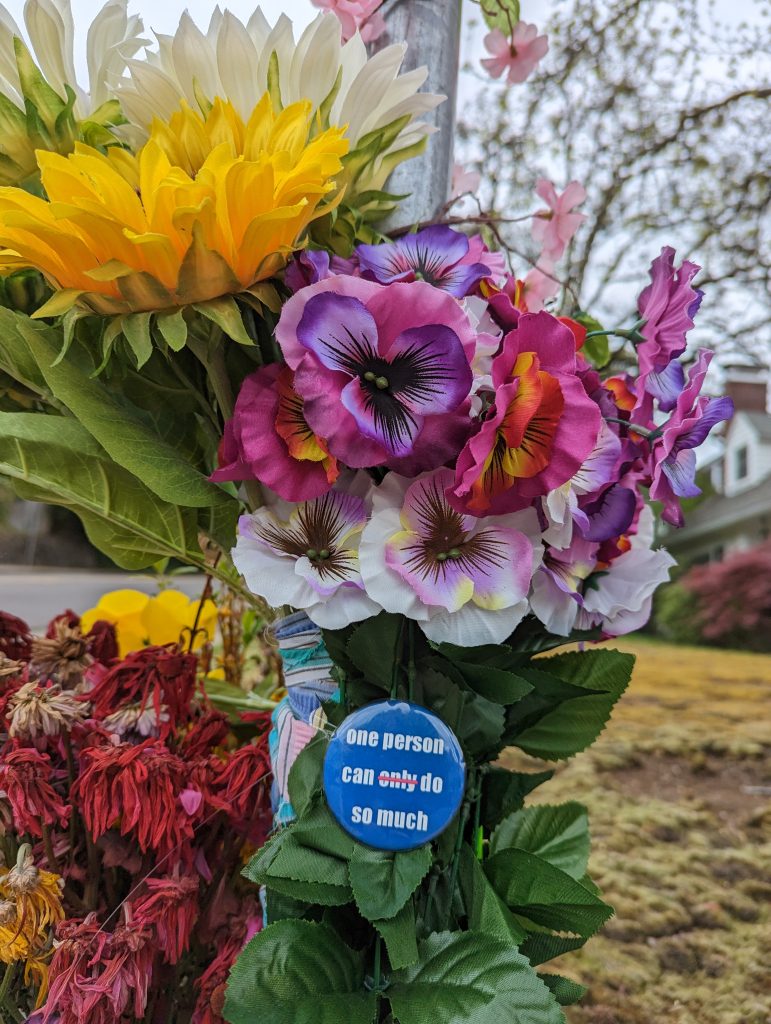
Meanwhile, many of those who knew and loved Allen have paid tribute in the months since the cyclist’s death. An August celebration of life drew over 200 family members, friends and colleagues, and a memorial to the cyclist remains at the intersection.
Allen worked for the state for around two decades, most recently as an executive with the state Department of Agriculture and previously in the state Department of Forestry.
“Marganne was a friend, fellow scientist, and dedicated public servant,” the agriculture department wrote in a Facebook post about a week after the collision. “Her contributions to the State of Oregon and the natural resources community were superabundant. Marganne lived an amazing life filled with adventure, laughter, family, and love.”
Workers from the two state agencies met in late June at the forestry department’s Salem headquarters to plant a dogwood tree in Allen’s memory and share stories about her.
“Marganne dedicated her professional life to the stewardship of Oregon’s natural resources,” the department said in a Facebook post. “Her dedication, strength, and compassion continues to inspire us all.”
RELATED COVERAGE:
Salem police gave video evidence to investigators three months after cyclist’s death
City kept in close touch with DEA following fatal cyclist collision, records show
Video shows driver ran stop sign in fatal collision with Salem cyclist
Salem police gave evidence to DEA minutes after agent’s fatal collision with cyclist
Contact reporter Ardeshir Tabrizian: [email protected] or 503-929-3053.
SUPPORT OUR WORK – We depend on subscribers for resources to report on Salem with care and depth, fairness and accuracy. Subscribe today to get our daily newsletters and more. Click I want to subscribe!

Ardeshir Tabrizian has covered criminal justice and housing for Salem Reporter since September 2021. As an Oregon native, his award-winning watchdog journalism has traversed the state. He has done reporting for The Oregonian, Eugene Weekly and Malheur Enterprise.


